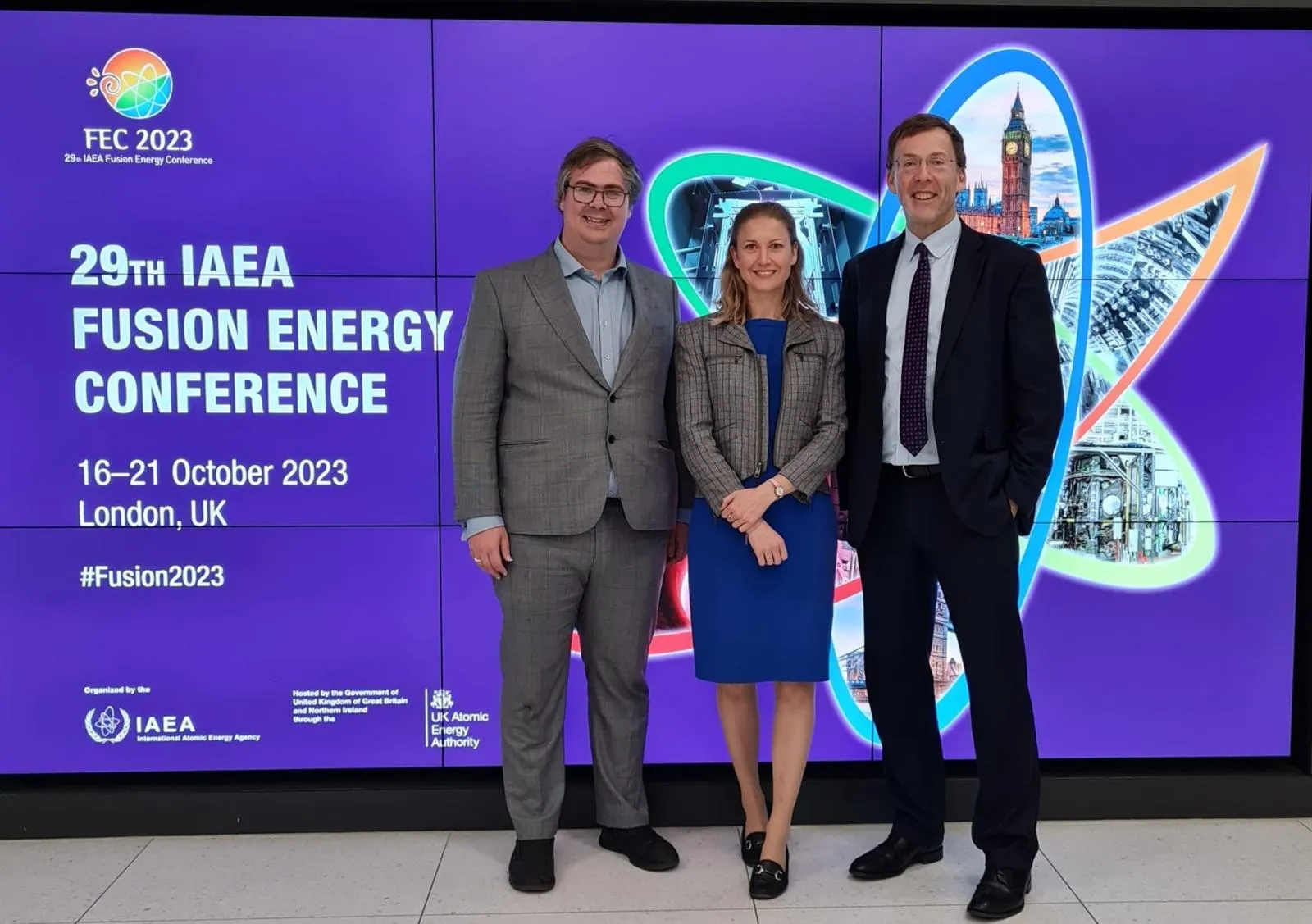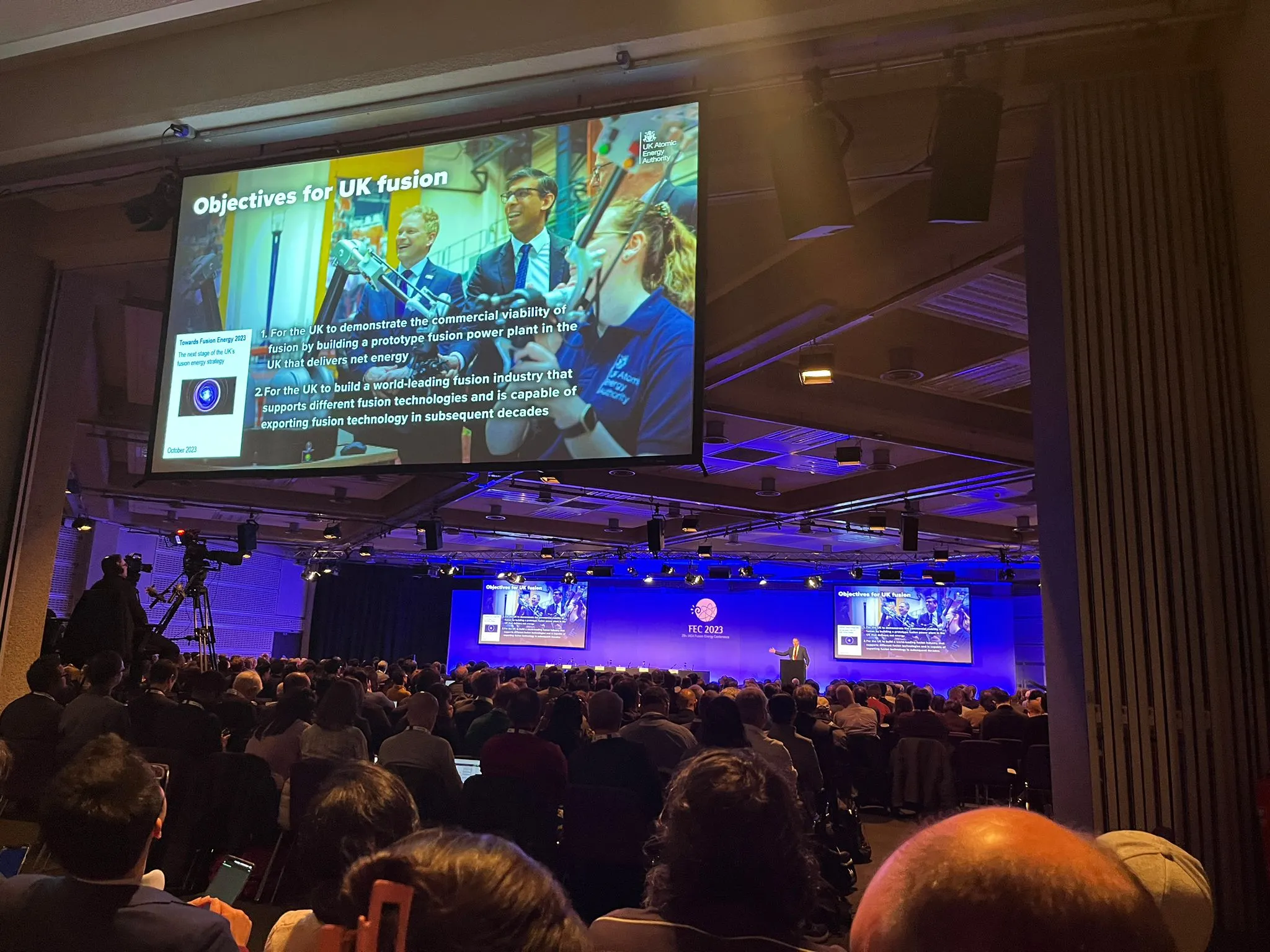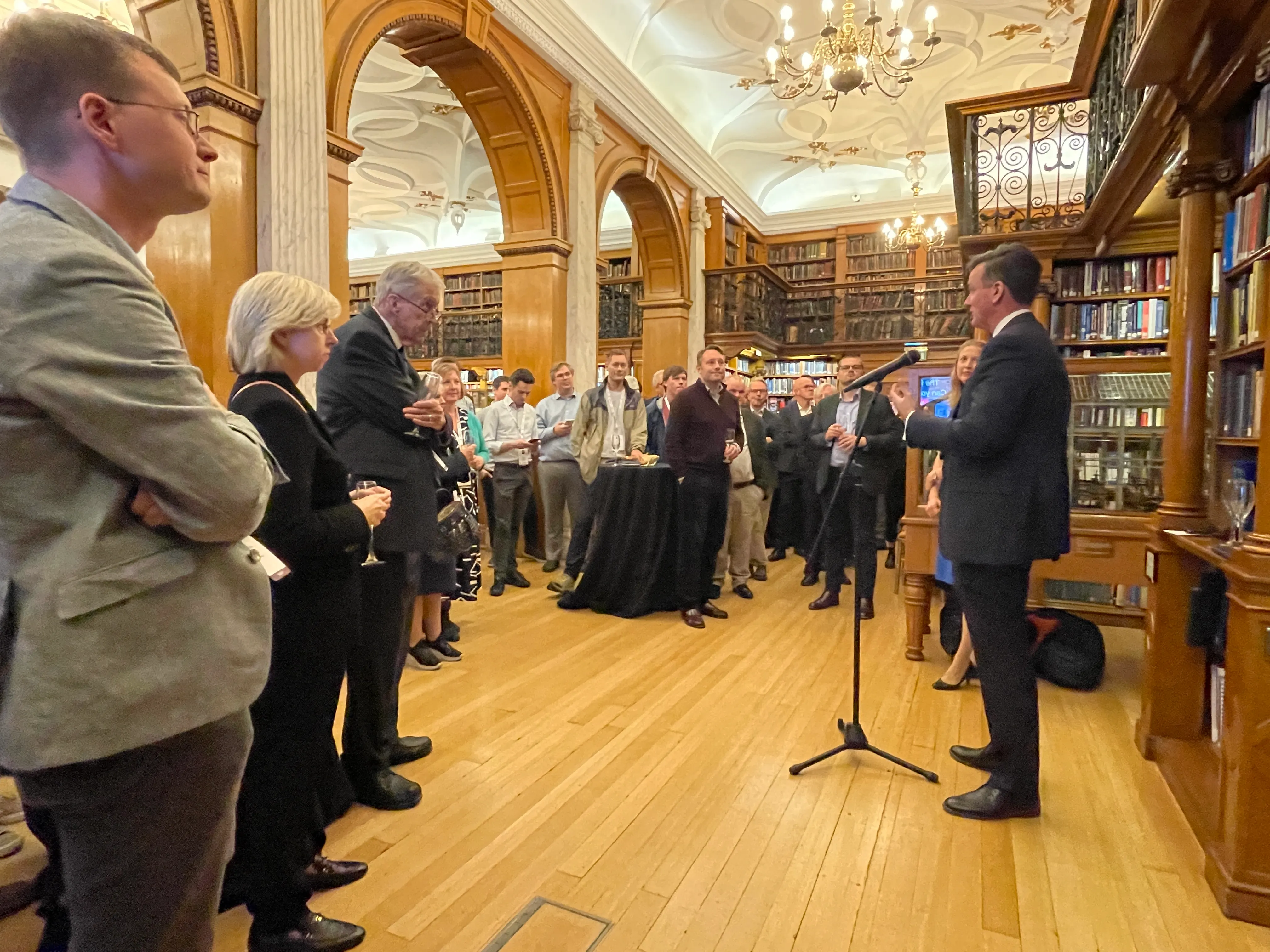Insights from the IAEA Fusion Energy Conference
The IAEA Fusion Energy Conference was held in London from 16-21st October, bringing together scientists, policy makers and leaders from public and private fusion.

Nick Walkden (FIA), Melanie Windridge (Fusion Energy Insights) and Tim Bestwick (UKAEA)
Here are 3 key insights from the event.
1. Private fusion is going mainstream
Just 5 years ago I never would have thought it, but at the IAEA Fusion Energy Conference this year private fusion companies were sharing high-level panels with leaders of the public fusion labs and the IAEA Director General, Rafael Mariano Grossi, opened the conference with, “It is good to be here in this home of so many important fusion endeavours: Mast Upgrade, STEP, JET, RACE, Tokamak Energy, First Light Fusion and General Fusion, to name a few.”
Private fusion advances were discussed alongside public ones. The final afternoon of the conference featured an interesting session on Pathways to Fusion that brought together private companies like Commonwealth Fusion Systems. Type One Energy and Ex-Fusion with EuroFusion, ITER and STEP.
Public-private partnerships are part of almost every conversation.
It’s great to see the evolution, and it just highlights how important it is becoming for people—particularly business people—outside the fusion community to be aware of developments happening in the new industry.
“The world is in urgent need of reliable energy sources that mitigate climate change and provide energy security. Governments know it, the public is demanding it, and people are becoming better informed about fusion,” said DG Grossi.

At the IAEA Fusion Energy Conference
2. Networking is so important
On the Tuesday of the conference we organised Fusion Connect, a celebration and networking reception, which we held in the splendid library of the Institution of Mechanical Engineers.
This was a joint event between Fusion Energy Insights, the Fusion Industry Association and the Fusion Cluster and it brought key players in the fusion industry together in the room with members of our respective organisations.
With feedback along the lines of “enjoyable,” “well attended,” “great people in the room” and even being told that it was the highlight of the Fusion Energy Conference, we can see the value people put on connecting with the right people to further their business objectives.

Fusion Connect, a celebration and networking reception in the library of the Institution of Mechanical Engineers
3. Timelines for fusion are simultaneously too fast and too slow
Fusion is hard, and despite the clear progress in recent years the challenges ahead are still great. Private company timelines to demonstrating first fusion electricity are knowingly ambitious. Sir Ian Chapman, CEO of UKAEA called the STEP timeline “audacious.”
And yet, the world is facing a climate crisis, and although we think we’re doing something about it with the huge increase in renewables generation, we’re barely covering the increase in global energy demand.
In a recent report the International Energy Agency predicted renewables would provide half of the world's electricity by 2030, but it warned that emissions were still too high to prevent temperatures rising above a key threshold of 1.5C.
The warming rate of the last 15 years is 40% faster than before 1970s. Climate change is accelerating.
And what about energy security consideration?
“Will fusion get us to our climate goals of 2050?” asked IAEA Director General Grossi. “That is being debated. But the world will continue after 2050, and it will need clean energy on a massive scale beyond that date, to be sure.”
So we need fusion now more than ever, and we need it as soon as possible. So the timelines for fusion, audacious as they may be, are perhaps not audacious enough.

